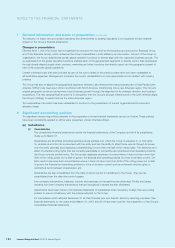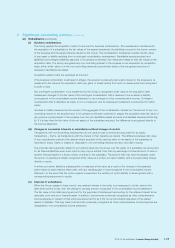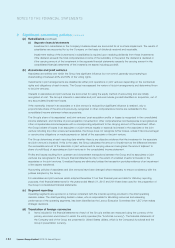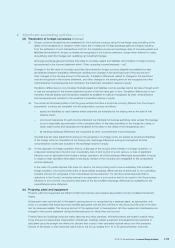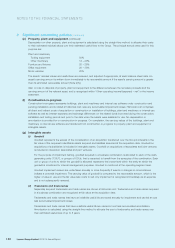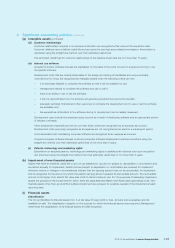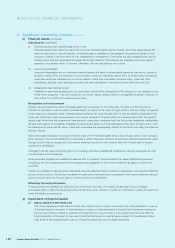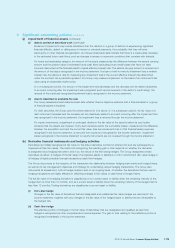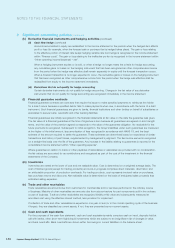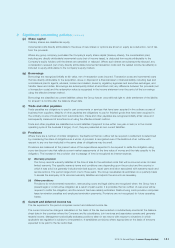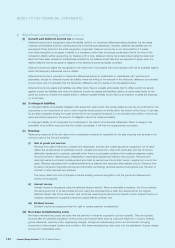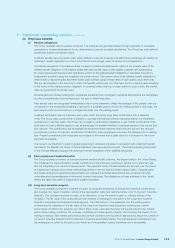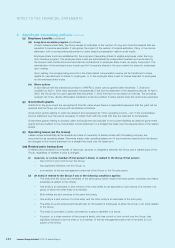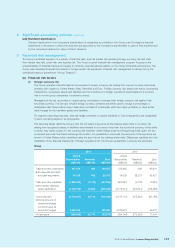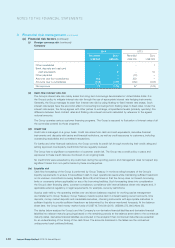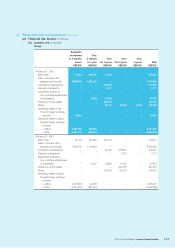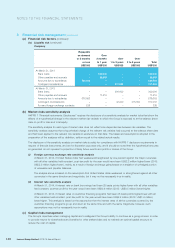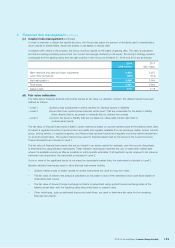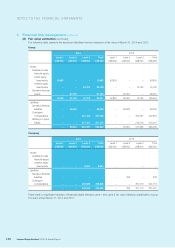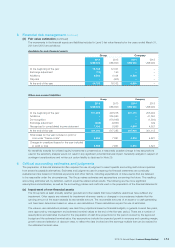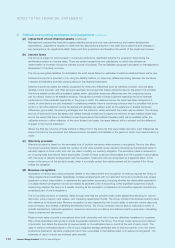Lenovo 2014 Annual Report Download - page 144
Download and view the complete annual report
Please find page 144 of the 2014 Lenovo annual report below. You can navigate through the pages in the report by either clicking on the pages listed below, or by using the keyword search tool below to find specific information within the annual report.
142 Lenovo Group Limited 2013/14 Annual Report
NOTES TO THE FINANCIAL STATEMENTS
2 Significant accounting policies (continued)
(t) Current and deferred income tax (continued)
Deferred income tax is recognized, using the liability method, on temporary differences arising between the tax bases
of assets and liabilities and their carrying amounts in the financial statements. However, deferred tax liabilities are not
recognized if they arise from the initial recognition of goodwill; deferred income tax is not accounted for if it arises
from initial recognition of an asset or liability in a transaction other than a business combination that at the time of the
transaction affects neither accounting nor taxable profit or loss. Deferred income tax is determined using tax rates (and
laws) that have been enacted or substantively enacted by the balance sheet date and are expected to apply when the
related deferred income tax asset is realized or the deferred income tax liability is settled.
Deferred income tax assets are recognized to the extent that it is probable that future taxable profit will be available against
which the temporary differences can be utilized.
Deferred income tax is provided on temporary differences arising on investments in subsidiaries, joint ventures and
associates, except for deferred income tax liability where the timing of the reversal of the temporary difference is controlled
by the Group and it is probable that the temporary difference will not reverse in the foreseeable future.
Deferred income tax assets and liabilities are offset when there is a legally enforceable right to offset current tax assets
against current tax liabilities and when the deferred income tax assets and liabilities relate to income taxes levied by the
same tax authority on either the taxable entity or different taxable entities where there is an intention to settle the balances
on a net basis.
(u) Contingent liabilities
A contingent liability is a possible obligation that arises from past events and whose existence will only be confirmed by the
occurrence or non-occurrence of one or more uncertain future events not wholly within the control of the Group. It can also
be a present obligation arising from past events that is not recognized because it is not probable that outflow of economic
resources will be required or the amount of obligation cannot be measured reliably.
A contingent liability is not recognized but is disclosed in the notes to the financial statements. When a change in the
probability of an outflow occurs so that the outflow is probable, it will then be recognized as a provision.
(v) Revenue
Revenue is measured at the fair value of the consideration received or receivable for the sale of goods and services in the
normal course of the Group’s activities.
(i) Sale of goods and services
Revenue from sale of hardware, software and peripherals, services and mobile devices is recognized, net of value-
added tax, an allowance for estimated returns, rebates and discounts, when both ownership and risk of loss are
effectively transferred to customer, generally when there is a persuasive evidence that a sales arrangement exists,
the price is fixed or determinable, collectability is reasonably assured and delivery has occurred. Revenue from
extended warranty contracts is deferred and amortized as earned over the contract period, ranging from one to four
years. Revenue associated with undelivered elements is deferred and recorded when delivery occurs. Revenue from
provision of systems integration service and information technology technical service is recognized over the term of
contract or when services are rendered.
The Group defers the cost of shipped products awaiting revenue recognition until the goods are delivered and
revenue is recognized.
(ii) Interest income
Interest income is recognized using the effective interest method. When a receivable is impaired, the Group reduces
the carrying amount to its recoverable amount, being the estimated future cash flow discounted at the original
effective interest rate of the instrument, and continues unwinding the discount as interest income. Interest income on
impaired receivables is recognized using the original effective interest rate.
(iii) Dividend income
Dividend income is recognized when the right to receive payment is established.
(w) Non-base manufacturing costs
Non-base manufacturing costs are costs that are periodic in nature as opposed to product specific. They are typically
incurred after the physical completion of the product and include items such as outbound freight for in-country finished
goods shipments, warranty costs, engineering charges, storage and warehousing costs, and contribute to bringing
inventories to their present location and condition. Non-base manufacturing costs enter into the calculation of gross margin
but are not inventoriable costs.


